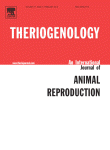
濒危雪豹的生存前景大好,这一切都要归功于莫纳什大学的科学家们,他们首次从一只成年雪豹的身体组织中提取并合成出一种类似于胚胎干细胞的干细胞。
在此之前,人们从未在猫科家族身上提取合成过诱导性多功能干细胞(induced pluripotent stem cells, iPS cells)——与胚胎干细胞与许多共同的、非常有用的特性。这项突破增加了冷冻贮藏遗传材料的可能性,从而有助于将来实施克隆及其他辅助生殖技术。
这项研究发表在Theriogenology杂志上,是Rajneesh Verma攻读博士课程的一部分,由Paul Verma博士监督实行,两个人都是来自莫纳什医学研究院(Monash Institute of Medical Research, MIMR)。来自莫纳什大学妇产系的副教授Peter Temple-Smith和昆士兰大学的Michael Holland教授也参与了此项研究。
研究人员使用威尔士莫戈动物园的成年雪豹的耳部组织样本来合成iPS细胞。
Verma博士说,这项突破的卓越之处在于要从这些动物身上获取生殖细胞或配子是相当困难的,即使这些动物是人工饲养的。
“尽管直接冷冻保藏濒危物种的身体组织会简单得多,但是要想保证有效,精子和卵子都是需要的。”
“干细胞的力量在于它们能够分化出机体所有类型的细胞。这就意味着,它们有成为生殖细胞的潜能。事实上,人们之前已成功地利用老鼠的iPS细胞培育出完整后代,由此可见,这样的可能性是非常巨大的。”
Verma先生说该项研究对于保护猫科动物和物种多样性的意义不言而喻。
“通过合成这些干细胞,我们成功地迈出了用成年濒危动物的身体组织产生生殖细胞的第一步。在不久的将来,我们的目标是发挥iPS细胞的潜能并创造出这些动物的后代。这样一来,我们就可以防止这些物种灭绝。”
雪豹是一种大型猫科动物,原产于中亚山脉。他们的高海拔栖息地和深居浅出的个性让人们很难统计出它们的准确数量,但据估计,野生雪豹的数量在3500到7000之间,并且数量还在持续减少。
Verma先生说他从小在印度的时候就开始对大型猫科动物着迷。
“所以,我运用我干细胞方面的专业知识来拯救这些动物也算是圆了我的一个梦。我还将同样的技术应用于猫科家族的其他成员,包括孟加拉虎、美洲虎和薮猫。”

Inducing pluripotency in somatic cells from the snow leopard (Panthera uncia), an endangered felid
R. Vermaa, M.K. Hollandb, P. Temple-Smitha, P.J. Vermaa
Induced pluripotency is a new approach to produce embryonic stem-like cells from somatic cells that provides a unique means to understand both pluripotency and lineage assignment. To investigate whether this technology could be applied to endangered species, where the limited availability of gametes makes production and research on embryonic stem cells difficult, we attempted generation of induced pluripotent stem (iPS) cells from snow leopard (Panthera uncia) fibroblasts by retroviral transfection with Moloney-based retroviral vectors (pMXs) encoding four factors (OCT4, SOX2, KLF4 and cMYC). This resulted in the formation of small colonies of cells, which could not be maintained beyond four passages (P4). However, addition of NANOG, to the transfection cocktail produced stable iPS cell colonies, which formed as early as D3. Colonies of cells were selected at D5 and expanded in vitro. The resulting cell line was positive for alkaline phosphatase (AP), OCT4, NANOG, and Stage-Specific embryonic Antigen-4 (SSEA-4) at P14. RT-PCR also confirmed that endogenous OCT4 and NANOG were expressed by snow leopard iPS cells from P4. All five human transgenes were transcribed at P4, but OCT4, SOX2 and NANOG transgenes were silenced as early as P14; therefore, reprogramming of the endogenous pluripotent genes had occurred. When injected into immune-deficient mice, snow leopard iPS cells formed teratomas containing tissues representative of the three germ layers. In conclusion, this was apparently the first derivation of iPS cells from the endangered snow leopard and the first report on induced pluripotency in felid species. Addition of NANOG to the reprogramming cocktail was essential for derivation of iPS lines in this felid. The iPS cells provided a unique source of pluripotent cells with utility in conservation through cryopreservation of genetics, as a source of reprogrammed donor cells for nuclear transfer or for directed differentiation to gametes in the future.
文献链接:https://www.sciencedirect.com/science/article/pii/S0093691X11004936








